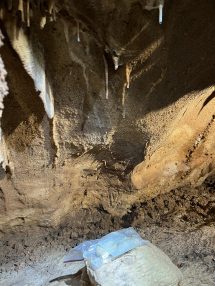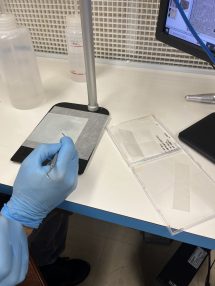Collections
December 9, 2022
Dripwaters were previously collected into 125 mL aliquot bottles cleaned following the Banner Isotope Clean Lab cycling procedure for non-acid cleaned items (each step performed in a Class 100 clean lab: 1) triple rinse and soaked in dilute micromolar soap for 24 hours, then drained and 2) triple rinse and soaked in distilled D1 water for 24 hours, then drained and 3) triple rinsed and soaked in 18.3 Mohm water for 24 hours, then drained and 4) dried in a class 100 laminar flow hood). Then water was aliquoted into 30 mL acid cleaned bottles cleaned following the Banner Isotope Clean Lab cycling procedure (each step performed in a Class 100 clean lab: 1) triple rinse and soaked in dilute micromolar soap for 24 hours, then drained and 2) triple rinse and soaked in distilled D1 water for 24 hours, then drained and 3) triple rinsed and soaked in 20% HNO3 solution, then drained and 4) triple rinsed and soaked in 18.3 Mohm water for 24 hours, then drained and 5) dried in a class 100 laminar flow hood). Waters stored for cations and strontium analysis were acidified by adding 1 µL of 7M HNO3 per 1 mL of sample then sealed to prevent calcite precipitation, eliminate microbial processes, and reduce cation sorption.
Calcite plates were collected by leaving sandblasted glass plates cleaned by the above non-acid cleaned procedure under drip sites for 4-6 weeks.

Precipitated calcite was scraped using a clean stainless steel mixing spatula in 1 cm2 squares in a Class 100 laminar flow hood. Powders were then transferred into pre-weighed 2.5 mL acid cleaned C-Vials then weighed for final weight. Powder weight was determined by subtracting initial from final C-Vial weight.
